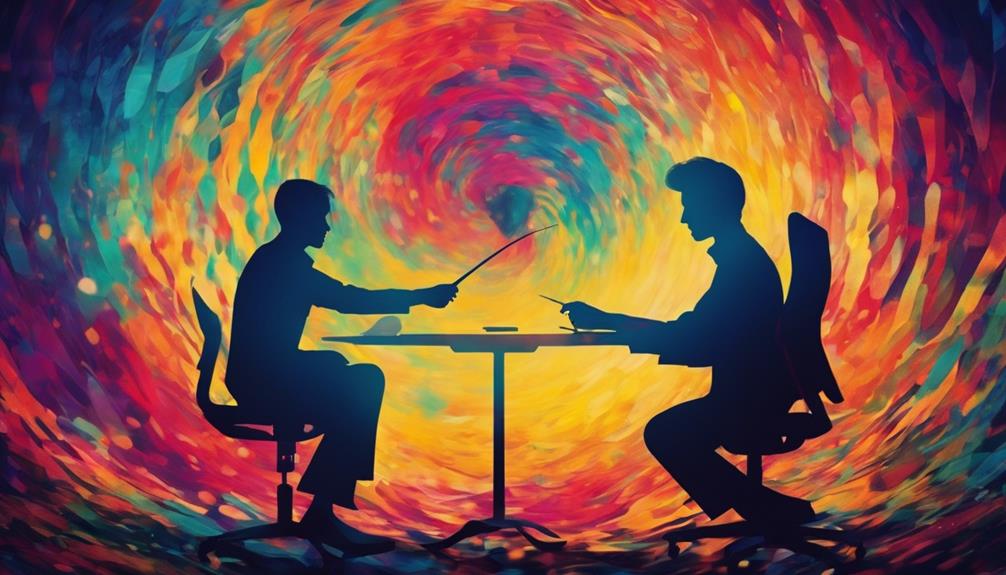AI Art: Igniting Moral Debates
The rise of AI-generated art has sparked various ethical debates, touching on issues of creative ownership and the authenticity of works produced by AI. These discussions are crucial because they delve into what it means to create art and who gets to be called an artist. As AI technology continues to evolve, it’s becoming harder to distinguish between art made by humans and that created by machines. This blurs our traditional views on art and authorship.
One primary concern is the potential for AI to replace human artists, raising questions about the future of artistic careers. This situation forces us to think about the role of humans in the creative process and the value we place on human versus machine-made art. The ongoing conversation about AI in art isn’t just about technology; it’s about our values and how we see the future of creativity.
In summary, AI art challenges our ideas about creativity and ownership, urging us to reconsider the boundaries between human and machine-made art. As we move forward, it’s essential to keep these discussions alive and ensure that the evolution of art remains inclusive and respectful of all creators.
Key Takeaways
The emergence of AI-generated art has ignited discussions on creative rights and the true nature of artistry. These debates are pivotal as they question the essence of artistic creation and the designation of the artist title in an era where technology blurs the lines between works crafted by humans and those by machines.
- AI art questions ownership, blurring creator lines.
- Concerns over AI replacing human artists spotlight career futures.
- The dialogue extends beyond tech, reflecting on our creative values.
The ongoing discourse around AI in the art world is not solely about technological advancements but also about examining our core values and envisaging the trajectory of creative expression. Engaging in these conversations is vital to ensure that the evolution of art is considerate and inclusive of all contributors.
Defining AI-Generated Art
Art created through algorithms and artificial intelligence significantly changes how we view creativity. This new era of art, including everything from visual artworks to music and literature, is stirring a lot of discussions. It’s pushing us to rethink what it means to be creative and who gets called an artist. The conversation around the ethics of art made by machines is getting louder. It’s causing us to question whether a machine can be genuinely creative like a human.
The concerns around AI in art are deep. They make us think about originality and how technology might change the art world. Technology has become a more significant part of the art scene, so these discussions are more relevant than ever. They challenge us to redefine art and creativity and consider the value of the human element in making art.
The Question of Copyright

The rise of art created by artificial intelligence (AI) brings up new challenges in the area of copyright, especially when discussing who owns the rights to what. AI art, made by algorithms that learn from vast data collections, might use parts of copyrighted works. This raises questions about whether these pieces are genuinely original. The blend of tech and creativity is shaking up the old rules about what makes something original in the world of copyrights.
When art comes from a machine’s interpretation of copyrighted materials, figuring out who the author is becomes tricky. This highlights the need for clear rules to handle AI-created art’s unique nature. The ongoing discussions about copyright in the AI art world show how we need to find a balance between encouraging new ideas and protecting the rights of the original creators. As laws try to catch up, the big question is how to fairly decide who owns the rights and how to protect these rights when machines and humans are both creating art.
Authenticity and Originality
The rise of AI-generated art has sparked discussions about what it means to be authentic and original in art. These debates make us rethink how we see art made by humans versus machines. They highlight why it’s critical to consider the ethics of recognizing and safeguarding where creativity comes from.
Artistic authenticity and originality in the age of digital creation are complex. They force us to question whether something new can genuinely come from technology. These conversations are crucial as they make us think about the difference between art created by people and machines. They also stress the importance of ethical guidelines in valuing the roots of creativity.
Defining Artistic Authenticity
When discussing the idea of artistic authenticity, the conversation often turns to whether art made by artificial intelligence can match the emotional depth and expression we associate with human-made art. The issue of whether AI art can be original or have genuine intent is crucial, as it challenges our understanding of what makes art authentic.
Artistic authenticity involves a complex relationship between technological advancements and the enduring value of human expression. Critics argue about AI’s capacity to replicate the soul of creativity found in traditional art forms. The significance of the human touch in giving art its emotional impact and sense of realness is also a hot topic. Furthermore, there’s a debate on how human creativity should be valued in an age where AI can enhance artistic endeavors.
In the modern conversation, the question isn’t just about technology’s role in art and what makes art meaningful and authentic.
AI Vs. Human Creation
Discussing the differences between AI and human creation in art brings up important points about what makes art feel authentic and unique. AI art mixes machine-made elements with those made by people, leading to debates on whether AI can truly capture human feelings and creativity.
This conversation questions what makes art unique, pointing out how human artists bring the special touch that AI tries to imitate. It also raises ethical questions about balancing human creativity with technological advances in making art.
In essence, this discussion examines what art is about and why being original matters.
Originality in the Digital Age
In today’s fast-paced world of technology, AI-generated art is redefining what we consider original and authentic in creative work. With computers rather than people creating art, an extensive discussion is being sparked on whether these artworks are genuinely original. This talk centers on whether art made by machines can stir the same feelings and depth as humans.
Art created by AI makes us rethink the boundaries of creativity, questioning the essence of originality. Doubts about the missing human touch in AI art are at the heart of discussions about its emotional impact. As AI becomes more involved in making art, we must reconsider what makes something authentic and original today.
This shift calls for a new understanding of creativity in the digital age.
Impact on Traditional Artists

The spread of AI art technology poses a real economic threat to traditional artists, shaking up their job security and standing in the art world. The debate over the authenticity of art created by machines versus art made by human hands also sparks questions about what we value in art. This trend could lead to a diminished appreciation for the skills and talent that human artists bring to the table, making the future uncertain for those who depend on their creative abilities.
Using simple language, it’s evident that the rise of AI in the art sector is not just a technical evolution; it impacts real people with natural talents. Traditional artists face challenges that could change how we view and value art and creativity. This situation underscores the importance of recognizing and supporting the unique contributions that human artists make to our culture and society.
Economic Threats to Artists
As artificial intelligence (AI) grows more advanced, it’s becoming a real challenge for traditional artists. These artists face new hurdles because AI can now create art, which stirs up many questions about what makes art valuable and unique.
- AI art is cheaper and faster to make, which can make it harder for traditional artists to make a living.
- Since AI can do creative work, there might be less need for human artists, and we could see fewer traditional artworks.
- It’s tough to tell the difference between art made by a person and art made by AI, which can make people value the work of traditional artists less.
We need to talk about how AI fits into making art so we can find a way for technology and human creativity to work together.
Authenticity in Creative Works
One of the biggest challenges facing the art world today is how AI changes how we see creative authenticity. AI creations are making it hard to tell the difference between art made by humans and that made by machines. This shift is causing a lot of debates about what makes art genuinely original and whether or not a piece of art can have emotional depth or a unique spirit if an AI makes it.
Traditional artists find it challenging to stand out now that AI-generated art is becoming more common. They’re working hard to keep the human touch alive in their art, something that’s becoming increasingly important as technology advances.
The conversation about what makes art authentic is highlighting how AI is shaking up the world of artistic expression. It’s a significant change, but it also opens up new paths for creativity and innovation.
Skill and Talent Devaluation
The rise of artificial intelligence in the creative world is a double-edged sword. While it brings innovation, it also challenges the value of human artists. AI can create art that could replace human artists. This makes people question if art made by humans is still as valuable.
Hand-crafted art by people might lose its appeal. We also wonder if AI art can truly capture human emotions and authenticity. These issues highlight traditional artists’ struggles in maintaining their relevance and the uniqueness of human creativity amidst technological progress.
To keep art created by people valued, we must emphasize the stories and emotions behind each piece. Highlighting the human aspect of art can help maintain its significance in an era dominated by machines.
The Concept of Creativity
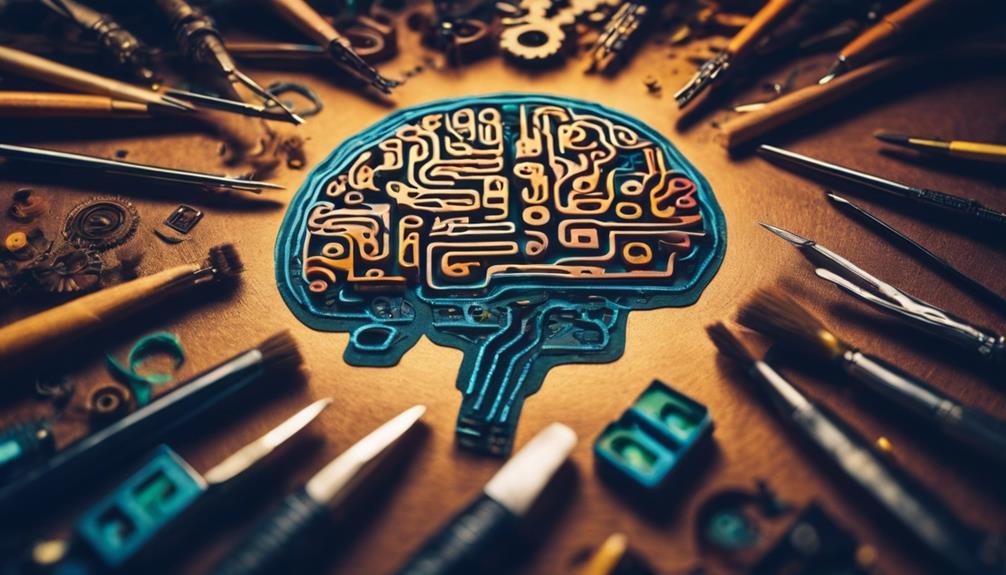
The rise of AI-generated art has sparked a significant discussion about what creativity means today, challenging the old views that defined what made art uniquely human. This change has led to debates about the role of human experience in art and whether AI can replicate the emotional depth and personal touch that comes from human artists. Some argue that AI art lacks the soul and intuition of works created by humans because it cannot similarly experience emotions, life experiences, or intentions.
| Aspect of Creativity | Human vs. AI |
|---|---|
| Emotional Depth | Present in human art, not found in AI |
| Intuition and Personal Touch | Key in human art, absent in AI |
| Ethical Considerations | Complicated in human art, just starting to be considered in AI |
These discussions also touch on moral issues, like whether AI’s mimicry of art styles and the creation of new pieces counts as natural creativity. Despite these challenges, the influence of AI in art is undeniable. It forces us to rethink the role of humans in the creative process and pushes the limits of what we consider innovative and inspirational in art.
This conversation reflects a broader trend in our current era, where technology’s role in traditional fields is being reexamined. It’s important to understand that while AI can produce art, the unique experiences and emotional insights of human creators are what genuinely enrich the art world.
Ethical Concerns in Automation
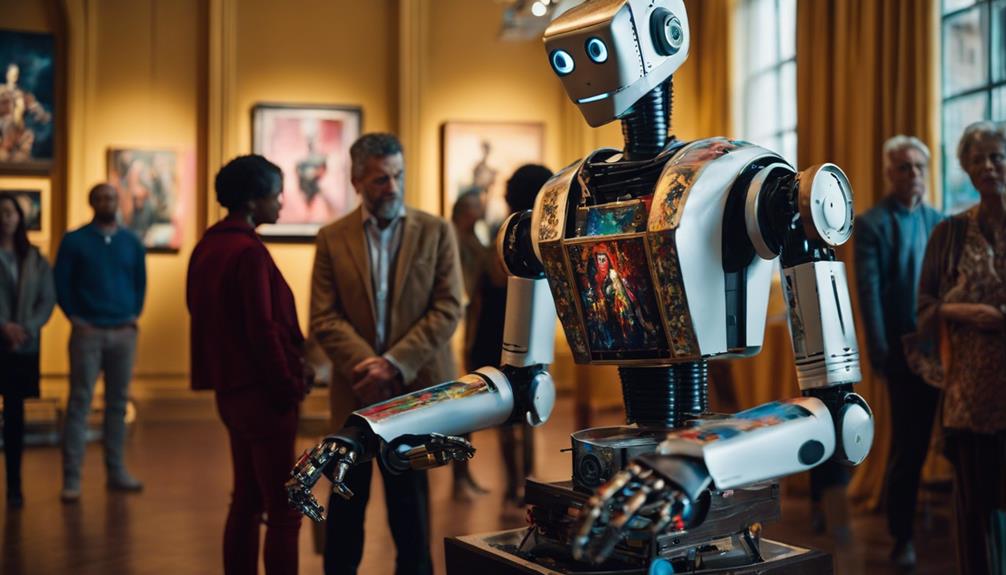
Exploring the ethical challenges automation brings to the art scene, it’s critical to consider how AI’s role in creating art reshapes our views on creativity and artistic value. The rise of AI-created art has launched a broad discussion on how technology intersects with creativity, revealing ethical issues that question the core of creative expression. Automation opens doors to innovation but also sparks debates about the role of human artists and the essence of art.
One primary concern is the possibility of AI taking over the roles of human artists, which could affect their jobs and lessen their appreciation for human creativity. Another issue is the question of originality and authenticity in AI-generated art, which challenges our understanding of genuine artistic expression. Lastly, who owns the rights to AI-created art complicates the ethical landscape, blurring the lines between innovation, regulation, and creative recognition.
Addressing these issues is vital for balancing technological progress with preserving art as a deeply human practice, ensuring art remains a meaningful part of our lives.
The Future of Artistic Expression
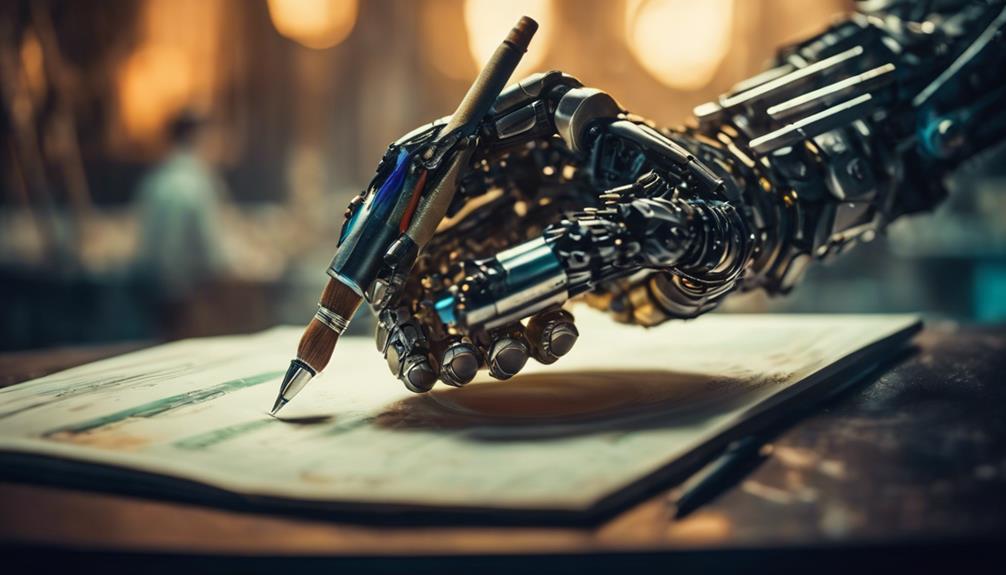
Integrating AI into artistic creation is transforming the future of how we view and engage with art. As AI-generated art becomes more common, it sparks debates over what creativity and authorship mean in the modern era, challenging our traditional views.
| Factor | Human Artists | AI Art |
|---|---|---|
| Creativity | Comes from personal insight | Driven by algorithms |
| Authorship | It is about individual creation | It is a joint effort |
| Expression | Uses known mediums | Breaks new ground |
This fusion of AI with art opens up fresh paths for creative exploration, pushing the boundaries of achievable. It’s not just about making art more varied; it’s also about making art creation more inclusive, inviting a more comprehensive array of talents and viewpoints. As art continues evolving, the partnership between human creators and AI tools leads us into a new age. This change is reshaping our ideas of creativity, ownership, and art itself.
In short, as we blend AI with human creativity, we’re entering a new chapter of artistic expression. This collaboration is about creating new kinds of art and redefining the relationship between creators and their tools, ensuring art remains a vital and dynamic part of our lives.
Community and Cultural Reactions
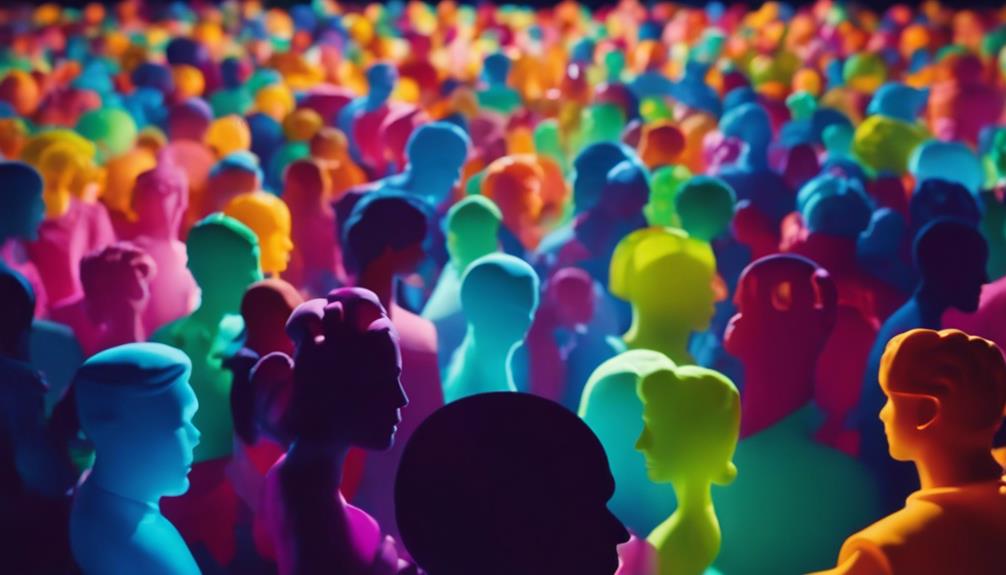
As we merge artificial intelligence with human creativity, we notice diverse reactions within communities and cultures. This blend of new tech and traditional arts brings about a mix of excitement and concern. Central issues include the ethical implications, maintaining human artistry, and the impact on cultural expression.
Community reactions are mixed, with some viewing AI as a helpful tool for creating new art forms and others seeing it as a threat to humans’ genuineness and emotional depth. Cultural responses mirror society’s mixed feelings about tech advancements, balancing the enthusiasm for new creative opportunities with fears of losing the essence of human creativity. Ethical questions about who really ‘creates’ art, originality, and how AI changes art’s value and perception in society are at the forefront of these discussions.
Understanding how AI art is reshaping our community and cultural landscapes is essential. It prompts us to rethink our definitions of artistic authenticity and creativity in the era of artificial intelligence.
Frequently Asked Questions
Why Is Ai-Generated Art Controversial?
- Art’s authenticity is questioned with AI creations.
- Creator rights and copyright issues spark debates.
- Concerns over cultural appropriation challenge art’s originality.
What Are the Ethical Issues of AI Art?
- Art theft challenges original creators.
- Economic effects disrupt creative jobs.
- Consent issues arise with artist’s rights.
Why Are Artists Upset About AI Art?
- Artists worry about losing jobs to machines.
- They value originality in creation.
- Copyright issues raise significant concerns.
Why Is Artificial Intelligence a Moral Issue?
- AI raises ethical concerns over responsibility and fairness.
- Concerns include job displacement, bias, and privacy loss.
- These issues challenge our social and ethical standards in tech.
